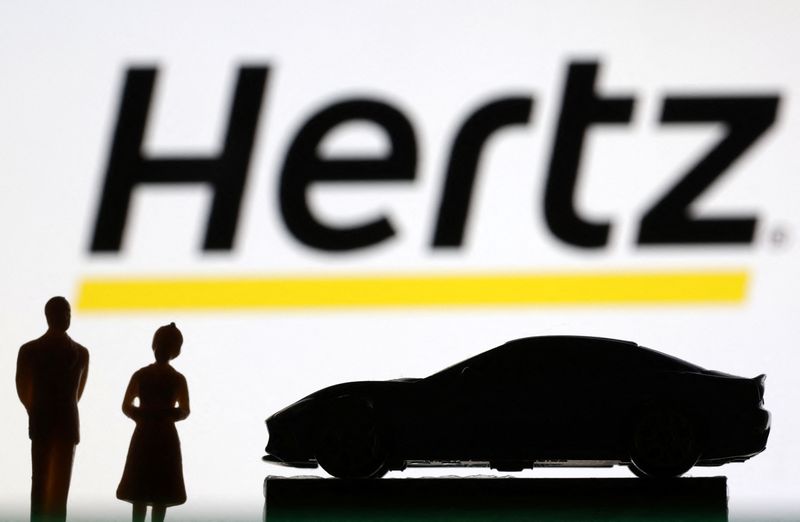Street Calls of the Week
Introduction & Market Context
Hertz Global Holdings (OTC:HTZGQ) Inc (NASDAQ:HTZ) released its Q2 2025 earnings presentation on August 7, 2025, revealing the company has achieved its target of breakeven EBITDA for the quarter. The car rental giant reported Adjusted Corporate EBITDA of $1 million, marking a significant improvement from the $460 million loss in the same period last year and the $325 million loss in Q1 2025.
The market has responded positively to the results, with Hertz shares trading up 11.58% at the time of writing, following a 12.57% gain in premarket trading. This reaction comes after the stock plummeted 19.24% following disappointing Q1 results earlier this year.
Quarterly Performance Highlights
Hertz reported Q2 2025 revenue of $2.2 billion, down 7% year-over-year but up 21% sequentially from Q1. While key revenue metrics such as Revenue Per Unit (RPU) and Revenue Per Day (RPD) showed year-over-year declines of 2% and 5% respectively, both metrics improved sequentially.
The company’s strategic focus on fleet management has yielded impressive results, with Depreciation Per Unit (DPU) decreasing dramatically by 58% year-over-year to $251, well below the company’s strategic target of under $300.
As shown in the following comprehensive performance comparison:
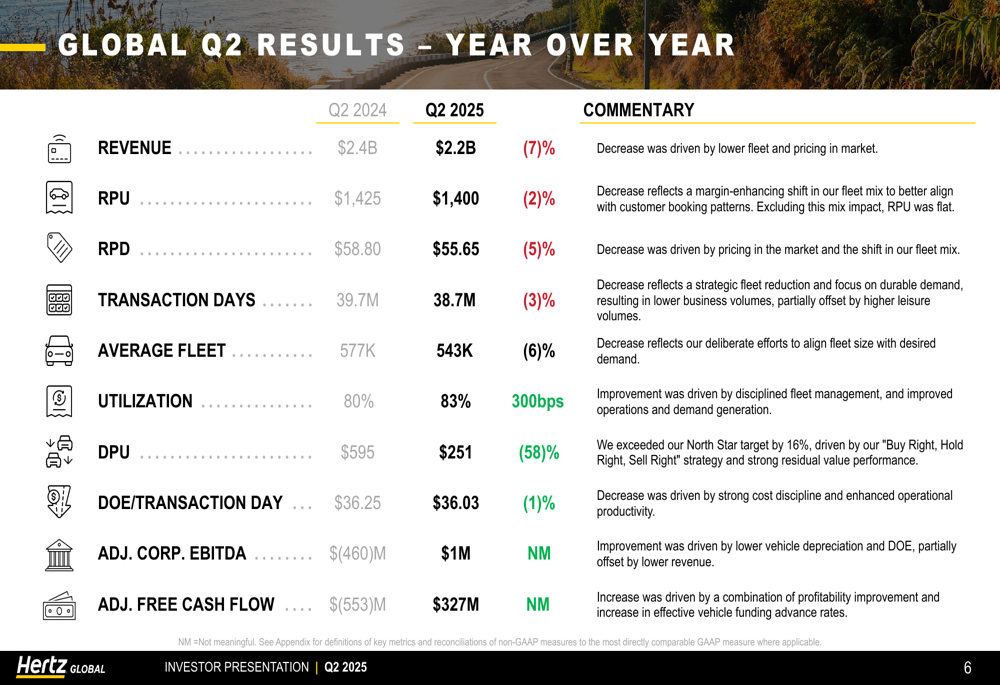
The most notable improvement came in Adjusted Free Cash Flow, which surged to $327 million in Q2 2025 from a negative $553 million in the same period last year. This remarkable turnaround was achieved despite lower revenue, highlighting the effectiveness of the company’s cost management initiatives.
Sequential improvements were equally impressive, as illustrated in this quarter-to-quarter comparison:
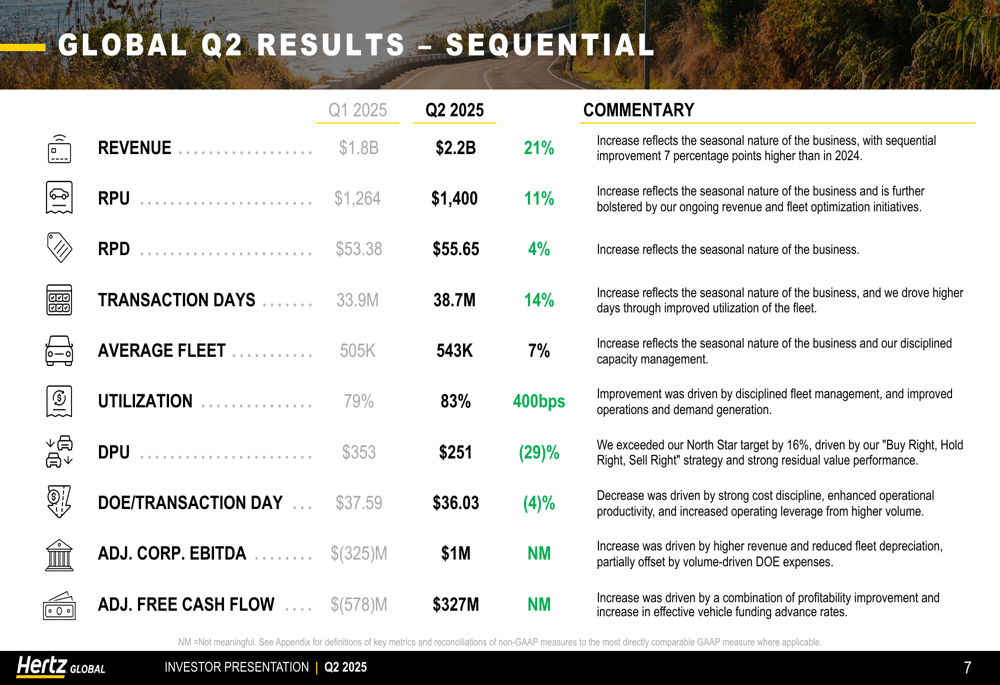
Vehicle utilization increased to 83%, up 300 basis points year-over-year and 400 basis points sequentially, indicating more efficient fleet management. The company also reduced its average fleet size by 6% compared to Q2 2024, aligning with its strategy to optimize asset utilization.
Strategic Initiatives
Hertz’s presentation outlined the key building blocks of its transformation strategy, focusing on three critical areas: fleet management, unit revenue, and cost control. The company has established clear targets for each area, including DPU under $300, RPU over $1,500, and Direct Operating Expense (DOE) per Transaction (JO:NTUJ) Day in the low $30s.
The strategic framework is detailed in the following slide:
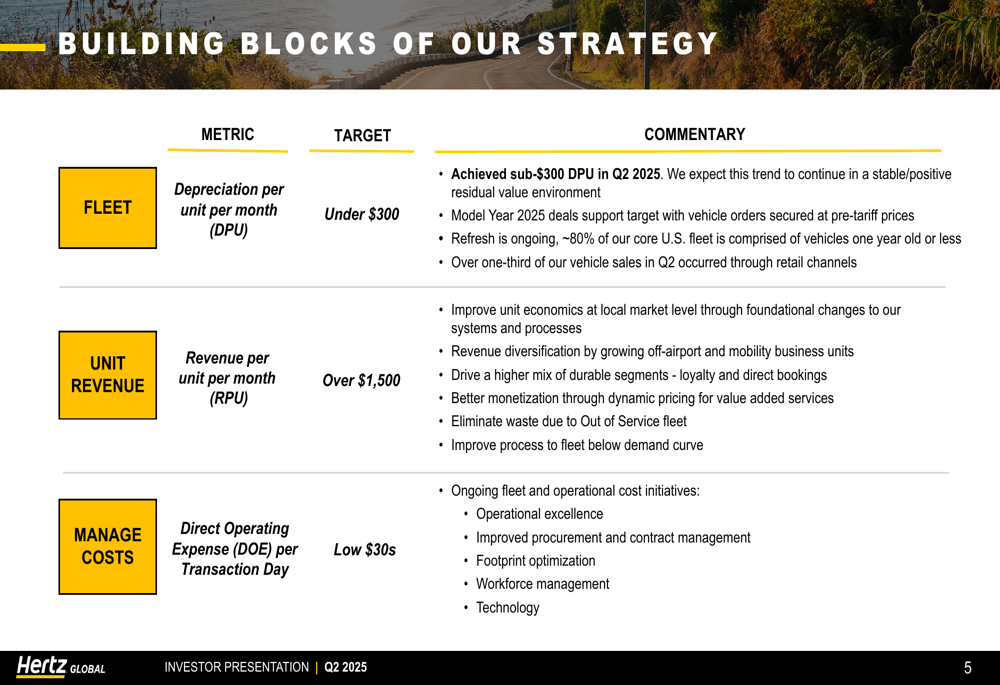
The Q2 results demonstrate significant progress in fleet management, with DPU of $251 already exceeding the target. However, RPU at $1,400 remains below the $1,500 target, and DOE per Transaction Day at $36.03 is still above the "low $30s" goal, indicating areas for continued improvement.
Hertz continues to position itself as a global leader in car rental, with approximately 11,200 locations across 160 countries, a fleet of around 560,000 vehicles, and 25 million annual rentals. The company’s global scale and diverse brand portfolio remain key competitive advantages.
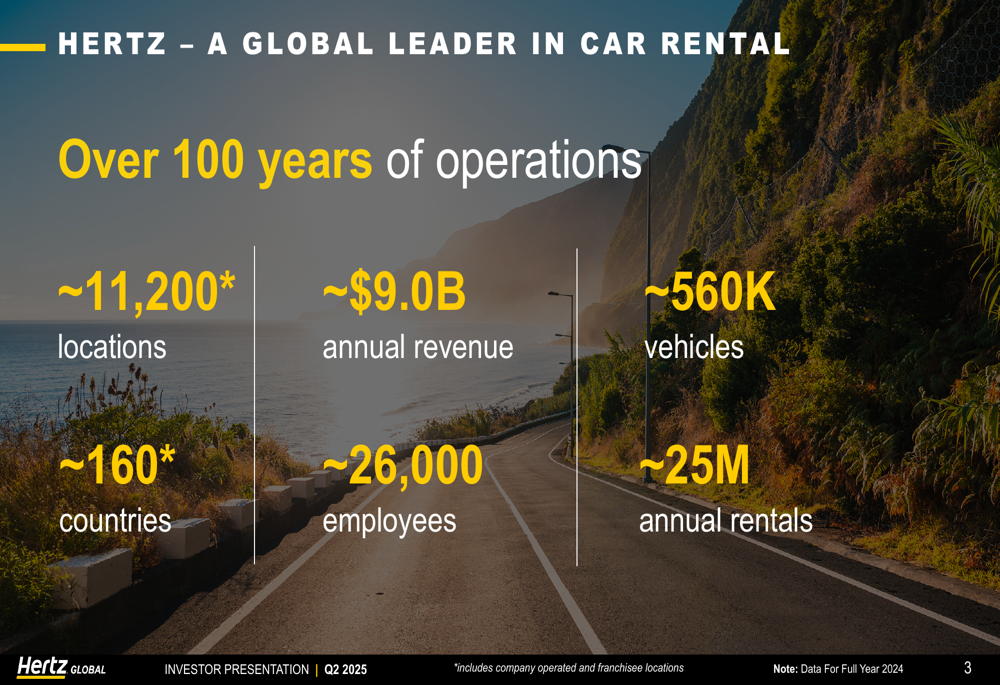
Financial Position
Hertz reported a solid liquidity position of $1.4 billion as of June 30, 2025, consisting of $503 million in unrestricted cash and $946 million available under its First Lien Revolving Credit Facility. The company has successfully extended $1.7 billion of First Lien RCF commitments to 2028, providing financial flexibility throughout its transformation.
The debt maturity profile shows manageable near-term obligations, with only $9 million due in 2025 and $581 million in 2026. However, significant maturities of $2.0 billion and $2.5 billion loom in 2028 and 2029, respectively.
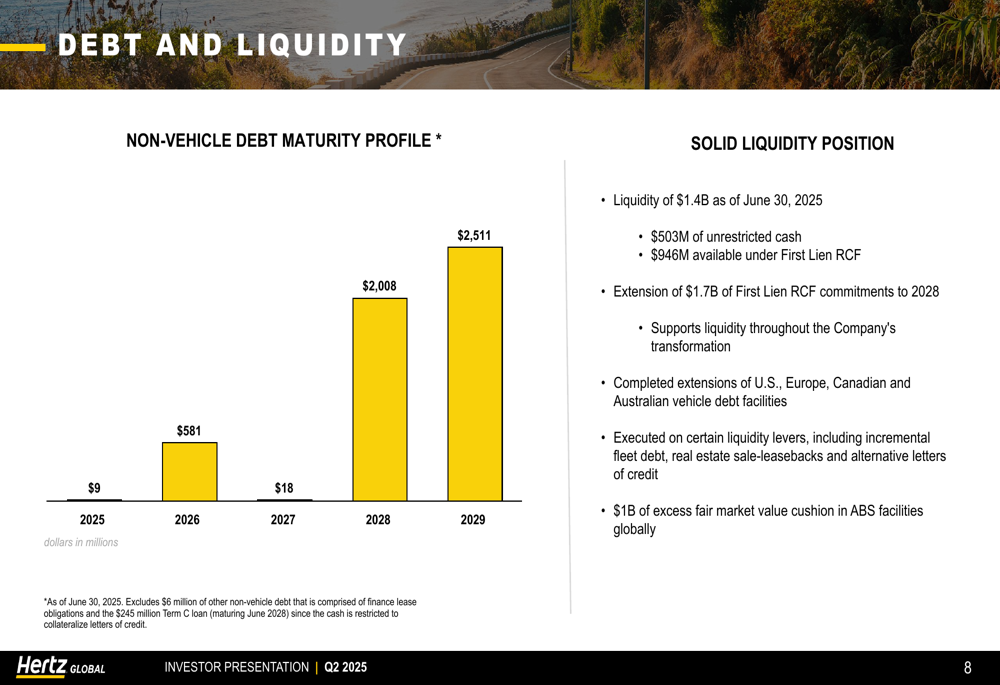
The company has also completed extensions of vehicle debt facilities in the U.S., Europe, Canada, and Australia, and maintains a $1 billion excess fair market value cushion in its Asset-Backed Securities (ABS) facilities globally, providing additional financial flexibility.
Forward-Looking Statements
Having achieved its Q2 target of breakeven EBITDA, Hertz appears on track to meet its previously stated goal of "a sizable profit in Q3," potentially marking its first positive EPS since 2023. The company had previously targeted a full-year EBITDA margin in the low single digits and aims for $1 billion in EBITDA by 2027.
The dramatic improvement in depreciation costs and free cash flow suggests the company’s transformation strategy is gaining traction. However, challenges remain in growing revenue and further reducing operating expenses to meet strategic targets.
Hertz’s global presence and diverse brand portfolio position it well to capitalize on travel recovery trends, though the company must continue to navigate competitive pressures and economic uncertainties.
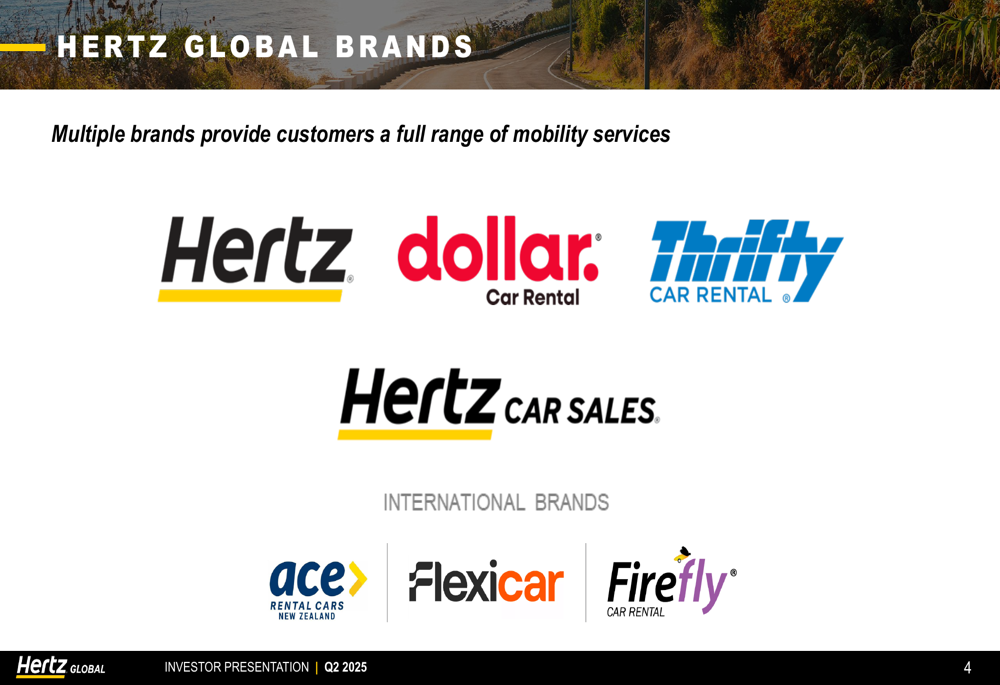
The Q2 2025 results represent a significant milestone in Hertz’s turnaround journey, with the achievement of breakeven EBITDA marking a potential inflection point after a challenging period. Investors will be closely watching whether the company can build on this momentum to deliver the promised profitability in the coming quarters.
Full presentation:
This article was generated with the support of AI and reviewed by an editor. For more information see our T&C.
